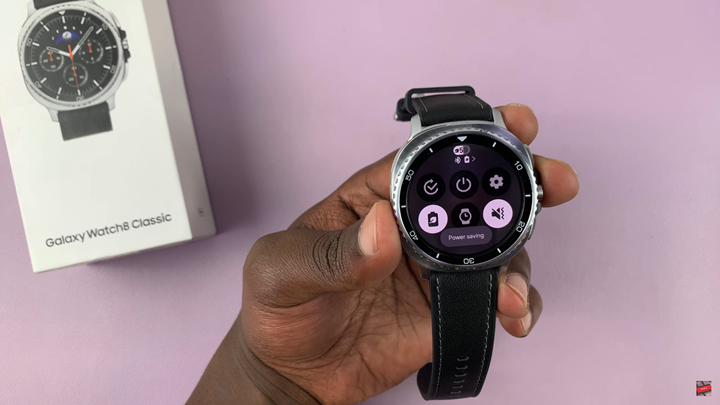Jonathan Mahler’s portrait of four crucial years in 1980s New York City shows a volatile and divided city in crisis, with loudmouths from Al Sharpton to Rudy Giuliani to Donald Trump accumulating power. The post The Power Brokers appeared first on Washington Monthly.

Six months ago, New York City seemed to be in crisis. Donald Trump’s inroads into working-class and immigrant neighborhoods had scrambled political assumptions. The intersection of crime, homelessness, mental illness, and a surge of refugees played out on subway platforms and in news headlines. Republicans and the New York Post did their best to stoke the outrage, seizing on flashpoints like the Midtown assassination of a UnitedHealthcare executive. Some on the left hailed the alleged perpetrator, Luigi Mangione, as a vigilante hero. Others on the right championed Daniel Penny, a white former Marine, who choked a mentally ill Black man named Jordan Neely to death after a confrontation on a subway car. The mayor, who was battling corruption charges, seemed ill-equipped to respond.
A few months later, a 33-year-old democratic socialist—who had once called for abolishing the police—swept to the Democratic mayoral nomination, brilliantly using social media to pitch an optimistic vision and drown out the tabloids and career politicians maligning him. They ran on anger and fear. He ran on affordability and hope.

In that context of civic breakdown and potential transformation, Jonathan Mahler’s The Gods of New York: Egotists, Idealists, Opportunists, and the Birth of the Modern City: 1986-1990 arrives with uncanny relevance.
Mahler, a longtime staff writer at The New York Times Magazine, previously chronicled the city’s chaos of a decade earlier—arsons and rubble, the Son of Sam killing spree, the 1977 blackout, and the Yankees World Series victory—in his book Ladies and Gentlemen, The Bronx Is Burning (a real quote from Howard Cosell as a camera in the ABC Sports helicopter hovering over Yankee Stadium cut away to show nearby fires). He returns to the same city here, but with a wider lens and a more explicitly political purpose.
In Mahler’s telling, New York’s financial collapse in the 1970s and its soaring crime and middle-class exodus set the stage for a more profound transformation: a shift in power away from public officials and organized labor toward a new class of private elites—real estate barons, media moguls, Wall Street financiers, and a constellation of street preachers, race-baiters, crusading lawyers, and backroom fixers who reshaped the city’s narrative. As a New York Times Magazine cover story would put it in 1985:
“The people who are making the deals and shaping the future of the city are, more than ever, private individuals.”
Ed Koch had won election as mayor in 1977 as the embodiment of blunt-spoken, liberal pragmatism. But by the mid-to-late ’80s, New York’s surface glitter—its real estate boom, its rising skyline—masked a much deeper erosion. The public hospital system teetered on the edge of collapse. AIDS ravaged the city. Homelessness surged (from 1982 to 1987, the number of New Yorkers living in shelters increased 250%). As an epidemic of crack cocaine tore through Black neighborhoods, racial strife was everywhere. Major episodes included the Howard Beach racial attack, the Tawana Brawley rape hoax, the killing of Yusuf Hawkins by a white mob of teenagers in Bensonhurst, and the Central Park jogger case.
Mahler portrays Koch as well-meaning but insufficient to the moment, as he unraveled both physically and politically. City government was rotten with corruption. Koch’s Queens ally, Borough President Donald Manes, known as the “King of Queens,” wielded vast influence through his seat on the city’s Board of Estimate and was instrumental in doling out municipal jobs and contracts. Federal investigators, led by Rudy Giuliani, uncovered a sweeping bribery scheme that Manes ran at the city’s Parking Violations Bureau. Manes had installed his friend Geoffrey Lindenauer to run the office and funnel contracts in exchange for kickbacks. When Lindenauer flipped, agreeing to testify in exchange for a lighter sentence, Manes’s world collapsed. Three days later, while speaking on the phone with his psychiatrist, he asked him to hold for a moment, pulled a fourteen-inch knife from a kitchen drawer, and stabbed himself in the chest. Giuliani, focused on burnishing his reputation, swiftly prosecuted Stanley Friedman, another of Manes’s alleged co-conspirators, as the public face of municipal rot.
By that point, Koch had come to resemble an aging actor struggling through his final performances, Mahler writes. The mayor who once personified the city’s bounce-back spirit looked isolated and increasingly brittle (he suffered a stroke in 1987). After the 1987 Black Monday crash, he had little choice but to spend the remainder of his third term overseeing municipal austerity. Instead of fixing problems, Koch tried to control the optics.
This is where Joyce Brown enters the picture. Brown, a schizophrenic Black woman who had been living and defecating on an uptown sidewalk, became the test subject in Koch’s controversial attempt to institutionalize the homeless forcibly. But she hadn’t committed any crime; she simply refused to move. Mahler shows how Brown—unexpectedly media-savvy—turned her fight with Koch into national theater. With the help of the New York Civil Liberties Union, Brown defended her rights in court, appeared on talk shows to decry the lack of affordable housing in the city, and told reporters that she just wanted to be left alone. (Ronald Reagan even gave her a shoutout as a symbol of civil liberties when he met with Soviet leader Mikhail Gorbachev for the March 1988 Moscow Summit.) The court ultimately ruled in her favor, and she returned to her favorite stoop. Without making the point explicitly, Mahler is clear that Brown would have been better served by getting treatment for her schizophrenia.
Koch’s battles against AIDS activists, affordable housing advocates (“If you can’t afford to live here, mo-o-ve!”), and opponents of the NYPD followed similar trajectories: they defeated him through media spectacle. Larry Kramer, the playwright and co-founder of ACT UP, campaigned against what he saw as criminal indifference by the Koch and Reagan administrations in their response to the AIDS epidemic. His rhetorical style was volcanic: He called Koch and Anthony Fauci—a young infectious disease expert helping lead the government’s AIDS response—“murderers.” Mahler doesn’t flatten the conflict; he lets it breathe. Kramer’s anger and Koch’s paralysis get equal sympathy and scrutiny.
Koch, tarred by the city’s escalating racial tension (not aided by his poorly calculated remarks directed at the beloved Jesse Jackson), lost his bid for a fourth term in the 1989 Democratic mayoral primary. Democrats turned instead to Manhattan Borough President David Dinkins, an elegant Black lawyer and politician who had marched for Soviet Jewry and seemed like he could cool the city’s racial cauldron.
While Koch spiraled, Donald Trump soared. The developer’s first major publicity triumph came with the Wollman skating rink, a municipal project that had languished unfinished for six years. Trump promised to fix it fast and under budget, and he did.
Koch made no secret of his contempt for the real estate scion, and Trump relished the enmity. As Mahler shows, the feud helped Trump craft his chosen persona: the can-do outsider who delivered while politicians bickered.
But behind the headlines, Trump’s business empire was a house of cards. He had poured money—mostly borrowed—into Atlantic City casinos, financed with junk bonds. When Time magazine asked him to estimate his net worth in 1989, he replied, “Who the fuck knows?”
By the late 1980s, Donald Trump’s marriage to the Czech-born socialite Ivana was unraveling under the weight of his affair with Marla Maples, a 26-year-old aspiring actress. The affair had become increasingly conspicuous—Maples had spent the summer living on Trump’s yacht in Atlantic City, and a custom suite was being built for her at Trump’s Plaza Hotel. In December 1989, during a family ski trip to Aspen to celebrate Donald Jr.’s twelfth birthday, Trump invited both women, and ultimately a confrontation ensued between the two women that lives on in tabloid infamy.
Trump, incapable of shame, just kept going. “It had seemed like [Trump] would never recover from the damage he’d done to himself in the second half of the eighties,” Mahler writes, “In fact, those years would prove to be his crucible, fixing his brash billionaire’s image in people’s minds and turning him into an enduring ideal of what it looked like to be rich and successful in America. He had learned the power of publicity, but he had also learned the power of shamelessness.”
That was true of Trump’s intervention in the Central Park Jogger case. On April 19, 1989, a white woman jogging in Central Park was brutally beaten and raped. Within hours, five Black and Latino boys—aged 14 to 16—were arrested and coerced into giving false confessions. Four days later, Trump paid $85,000 to run a full-page ad in all four New York dailies: “BRING BACK THE DEATH PENALTY. BRING BACK OUR POLICE.”
“What happened to our city?” the ad read. Trump “was now refashioning himself into the city’s white id,” Mahler writes. The tabloids had already followed his lead. The Daily News and Post ran front pages calling the teens a “WOLFPACK.” Jimmy Breslin, the longtime columnist, called Trump’s ad an indictment not just of him but of the media that had built him up:
“The curious thing … is not that he destroyed himself yesterday—for all demagogues ultimately do that—but why he became so immensely popular with the one group of people who are supposed to be the searchlights and loudspeakers that alert the public to the realities of such a person. That would be those who work in the news business. . . . With the one quality Trump has, amazing brashness—‘I just bought the sky!’—he has overwhelmed the newspapers and television more than anyone we ever have had in this city.”
(The boys were eventually exonerated, but Trump never apologized.)
If Trump dominated the city through wealth and media, others wielded power through confrontation and spectacle. Enter Al Sharpton and Alton Maddox.
By the mid-1980s, Sharpton was a fixture in New York’s Black political life—a 300-pound former James Brown protégé turned street activist and preacher, almost always in tracksuits and a gold medallion. He was a far cry from today’s rail-thin political pundit in bespoke suits now seen on Morning Joe. Mahler recounts Sharpton leading a 28-car motorcade into the Howard Beach neighborhood, where a black man was killed by a mob of white teenagers, improvising a protest march that ended at New Park Pizza, where the victim had sought help. With reporters watching, Sharpton slapped a $100 bill on the counter: “Start serving up the slices … and don’t stop until the hundred’s gone.” Alton Maddox, meanwhile, was “either a superhero or a menace,” Mahler writes—a “bomb-throwing Black defense lawyer” known for fusing legal advocacy with insurgent politics. He sometimes called himself “attorney-at-war.” Born in the segregated Newnan, Georgia, Maddox had been beaten by police in his youth.
Their most infamous partnership came in 1987 with the case of Tawana Brawley, a 15-year-old Black girl from Wappingers Falls, New York, who claimed she had been abducted, assaulted, and smeared with racial slurs and feces by a group of white men. Sharpton and Maddox (with their colleague C. Vernon Mason) became her advocates. Rather than cooperate with the official investigation, they used the case to launch a broader crusade. Maddox and Sharpton demanded that Governor Mario Cuomo appoint a special prosecutor for racial crimes, or that Attorney General Robert Abrams personally try the case. When that didn’t happen, their rhetoric escalated with Maddox accusing Abrams—with no evidence—of “masturbating looking at Tawana Brawley’s picture,” and going further: “You’re no longer going to go into the men’s room with your perverted mind and rape our daughters!”
As Brawley’s story fell apart (her former boyfriend told Newsday that she had invented the allegations, apparently to avoid a beating by her mother’s boyfriend after running away from home for four days), Sharpton would double down and go on to accuse Dutchess County Assistant District Attorney Steven Pagones of the crime, also without any evidence.

Ultimately, a grand jury concluded in October 1988 that Brawley had not been the victim of a forcible sexual assault and that she likely staged the appearance of such an attack herself. Sharpton and her other advocates never apologized.
Amid the din of New York’s late-1980s political chaos, emerged Dinkins, a longtime Harlem political fixture, known for his calm demeanor and dignified presence. His campaign, managed by his aide, the formidable political strategist Bill Lynch, set out to build a grassroots multiracial coalition. “Lynch would need to construct his coalition more methodically,” Mahler writes, “neighborhood by neighborhood.” He housed the campaign’s Brooklyn headquarters between a liquor store and a boarded-up grocery, focusing on field organizing rather than media buys.
Dinkins’s campaign distanced itself from polarizing figures. Mahler notes that “publicly keeping his distance from Black activists and Black-owned media outlets” was a key tactic. It meant not campaigning with Jesse Jackson, for fear of being overshadowed, or Sharpton, for fear of being associated with his tactics. Though some Black politicians grumbled, most understood the path to becoming New York’s first African-American mayor required steadiness, not militancy.
“Lynch didn’t want [Sharpton] anywhere near his candidate. But he also didn’t want him trashing Dinkins to his supporters or the media,” Mahler writes. Lynch turned to Jesse Jackson to help privately deliver the message to Sharpton. They met the rotund reverend at a soul food restaurant in southeast Queens, where Jackson reportedly said: “Black power is attainable, but only if you keep your distance.” Lynch added bluntly: “Don’t fuck with me, Al.”
Meanwhile, the mayoral campaign of Rudy Giuliani, the former U.S. Attorney for the Southern District of Manhattan, was unraveling. Missteps had undercut his reputation as a hard-charging prosecutor, and he was a much less compelling figure on the stump than he’d been at his news conferences going after mobsters. He had “the demeanor of an undertaker and the verbosity of a lawyer,” one columnist wrote. Another wrote that if Giuliani “held up a baby, it might cry.” President George H. W. Bush, expected to be an ally, publicly mispronounced his name at a fundraiser—“Gerlani”—before giving up and calling him “Rudy.”
By midsummer, Giuliani’s lead had evaporated. He turned to Roger Ailes, the former Nixon aide and Republican media consultant who engineered Bush’s 1988 presidential win (think Willie Horton). Ailes reframed the campaign around race and fear. “Rudy’s going to get one percent of the Black vote by mistake,” he told reporters. Guliani ditched his fusion messaging of social liberalism and focused on crime, welfare fraud, and Jewish voter outreach. “Crime, Crack, and Corruption” and “Rudy to the Rescue” became the new campaign slogans.
The campaign ran a full-page ad in a Yiddish-language newspaper pairing Dinkins with Jesse Jackson. The goal was to frame Dinkins as an antisemite.
Dinkins tried to stay above it, but eventually responded with an open letter to Giuliani:
“You and Mr. Ailes may have bullied people in the past. But if you persist on your present course, you will learn something I learned in the Marine Corps: Marines aren’t very good at picking fights, but they certainly know how to end them.”
The 1989 mayoral election was the closest in more than 80 years. Dinkins won by just 3 points—roughly 44,000 votes. The narrow margin made his victory feel fragile, not triumphant. While Giuliani absorbed the loss upstairs at the Roosevelt Hotel, some 700 supporters gathered in the ballroom below, insisting the election had been stolen by “rampant voter fraud in Black neighborhoods like Bed-Stuy and Harlem.” When Giuliani finally addressed them near midnight, he was met with jeers and calls for a recount. Unlike in 2020 when he helped lead Trump’s “Stop the Steal” ruse, he did the right thing. “Quiet, QUIET,” he shouted, trying to restore order. But even as he urged the crowd to “unify behind the mayor of New York,” many of his own supporters shouted back: “No!”
Mahler doesn’t treat the 1989 election as a climax, but a denouement. Dinkins’s narrow victory—a far cry from the 78% percent of the city Koch had carried just four years earlier—marked the collapse of New York’s postwar liberal consensus and the rise of a new politics of optics, grievance, and media manipulation. In August 1991, a car in a Manhattan Rabbi’s motorcade struck and killed a seven-year-old Black boy in Crown Heights, triggering three nights of unrest in which a Jewish man was fatally stabbed, more than 150 police officers were injured, and Mayor Dinkins was faulted for a slow, ineffective response. Giuliani would return in 1993 and capitalize on the chaos, even fanning the flames of a riot led by off-duty police officers at One Police Plaza, to defeat Dinkins. Trump parlayed his tabloid presence into global branding. Andrew Cuomo would rise and fall as his father’s heir. Eventually, Michael Bloomberg would govern New York as a “luxury product.” The city, Mahler suggests, had chosen its storytellers—and in doing so, chosen its trajectory.
Reading Mahler now, it’s easy to marvel at how much the city has changed. But it’s also unsettling to see how little has changed, not just because New York’s ‘80s icons are still in the news. Hyperbolic media narratives are still the drivers of politics, and there’s no such thing as nuance. In that way, The Gods of New York is a stunning record of how power changes hands when institutions fail. What Mahler captures is not just a city’s past, but the country’s political future, already well underway. His scenes, brimming with color, speak for themselves.
The post The Power Brokers appeared first on Washington Monthly.

















